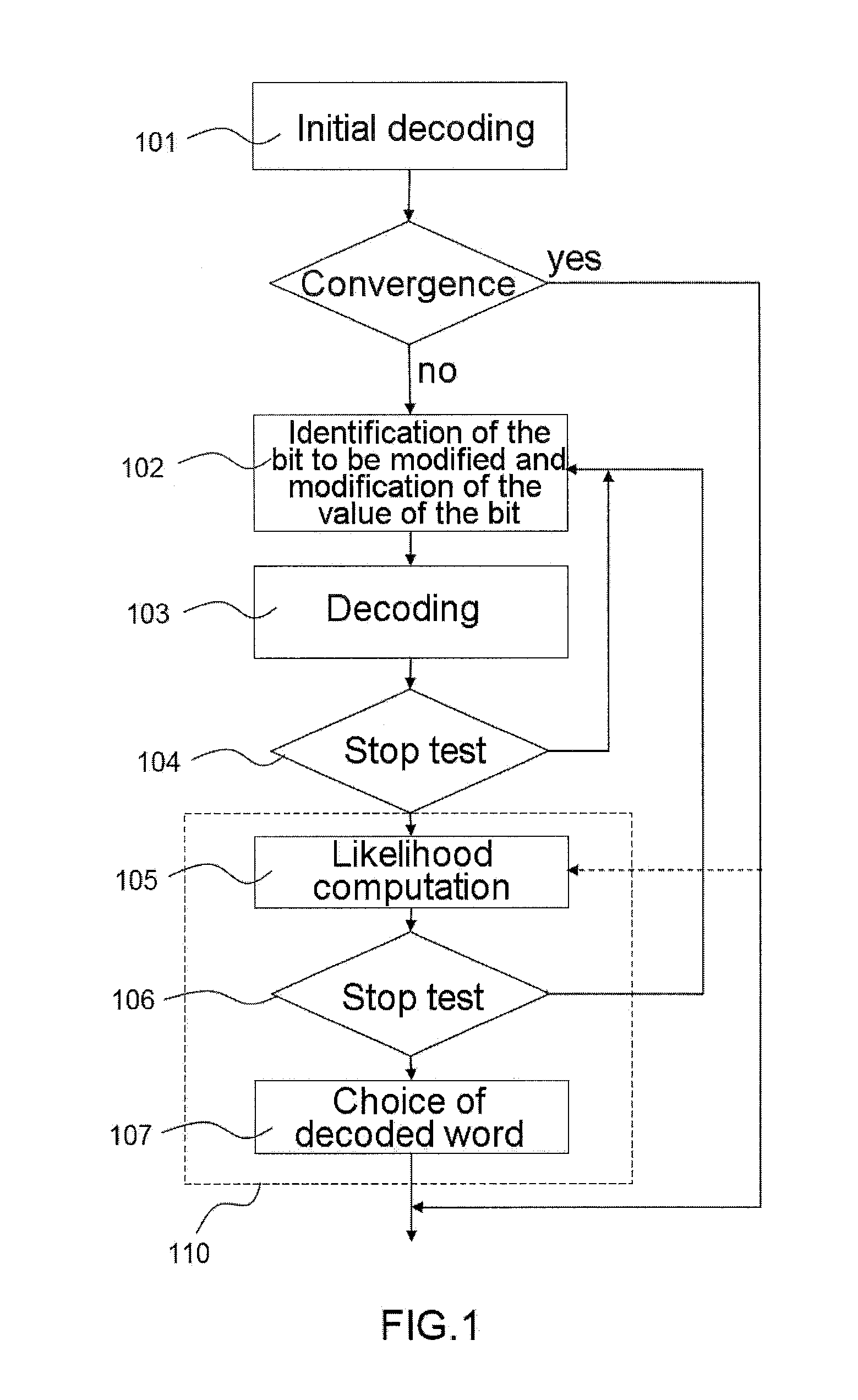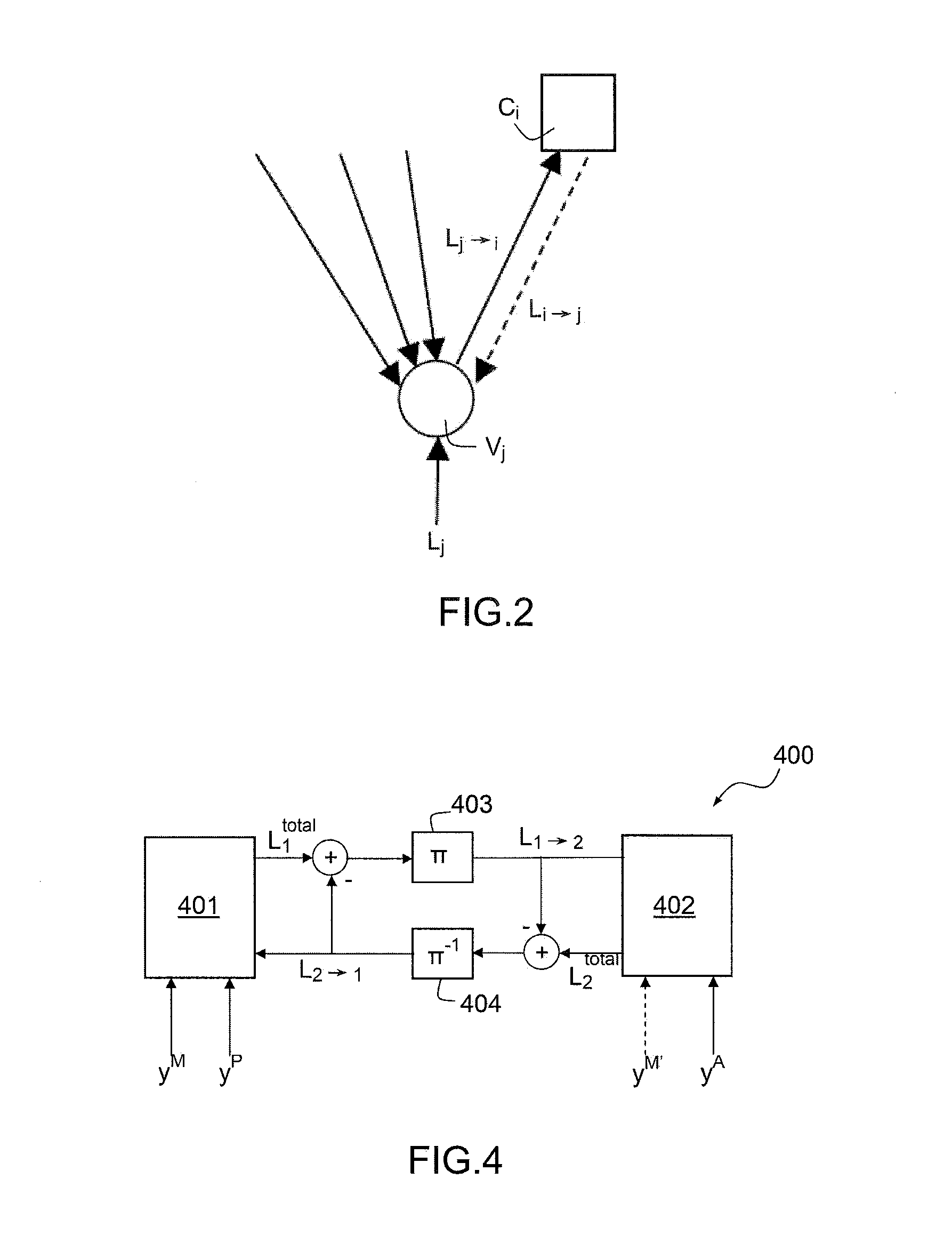Method for decoding a correcting code with message passing, in particular for decoding LDPC codes or turbo codes
a technology of message passing and correcting codes, applied in the field of decoding correcting codes with message passing, can solve the problems of large differences in the actual capacity of the code, 100 to 500 bits, and the performance of the code is substantially degraded, and achieves the effect of reducing the cost of decoding
- Summary
- Abstract
- Description
- Claims
- Application Information
AI Technical Summary
Benefits of technology
Problems solved by technology
Method used
Image
Examples
first embodiment
[0043]Firstly, the invention adapted for decoding LDPC codes will be described.
[0044]In a preliminary step 101, a first instance of decoding is executed for decoding the code word. According to a first embodiment of the invention, the decoding algorithm used is based on the employment of a bipartite graph, called a Tanner graph. Such a graph is notably adapted for decoding LDPC codes.
[0045]The reference text [1], and in particular Chapter 5 entitled “Low-density parity-check codes”, describes in detail the use of a Tanner graph for decoding an LDPC code and various decoding algorithms based on such a graph (in particular the sum-product algorithm). The decoding algorithm used in the preliminary step 101 of the method according to the invention can be one of those described in Chapter 5 of said text or any other equivalent algorithm on the condition that it is based on a bipartite Tanner graph. Such an algorithm will not be described in detail in the present document because those sk...
second embodiment
[0086]According to the invention, the decoding method can also apply to turbo codes.
[0087]In this case the decoding algorithm used to execute the steps 101 and 103 of the method according to the invention is no longer based on the use of a Tanner graph but on iterative decoding with exchanges of extrinsic information items between two decoders.
[0088]FIG. 4 schematizes the operation of a decoder adapted for decoding turbo codes.
[0089]Such a decoder 400 notably includes a first unitary decoder 401 of a first correcting code and a second unitary decoder 402 of a second correcting code linked to each other by a first and a second interleaver 403, 404.
[0090]The detailed operation of such a decoder 400 is known in the field and notably described in Chapter 7 of reference text [1]. It is not the subject of the invention and will therefore not be described in detail in the present patent application.
[0091]In summary, the decoder 400 operates iteratively according to the following principle....
PUM
 Login to View More
Login to View More Abstract
Description
Claims
Application Information
 Login to View More
Login to View More - R&D
- Intellectual Property
- Life Sciences
- Materials
- Tech Scout
- Unparalleled Data Quality
- Higher Quality Content
- 60% Fewer Hallucinations
Browse by: Latest US Patents, China's latest patents, Technical Efficacy Thesaurus, Application Domain, Technology Topic, Popular Technical Reports.
© 2025 PatSnap. All rights reserved.Legal|Privacy policy|Modern Slavery Act Transparency Statement|Sitemap|About US| Contact US: help@patsnap.com



